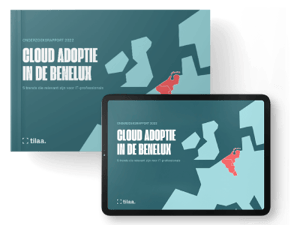
The Linux landscape today is so vast that it is impossible to list all the major trends and developments here, but we are happy to share 5.
Linux shoots for the stars
With the help of a lot of brainpower, dedication, and money, NASA was able to land Perseverance on planet Mars. A small step for the robot, and a huge one for humanity. This would not have been possible without Linux as a distribution. With that fact in mind, it is anything but boring in Linux Land. But there's even more. These are 5 trends to keep an eye on shortly.
Linux dominates the cloud
Since the corona crisis, the cloud transformation has accelerated even further. Thanks to Linux: almost everything that runs on the cloud is Linux (with the exception of MS Azure, of course).
Containerization and Linux
Containerization, which comes from the Linux corner, is increasingly used within Linux. This involves isolating or packaging software separately so that it can run in different environments.
The idea is that you divide an application into components with only one function or active process. For example, a PHP engine, a web server, and a database server. Each of these functions will run in one container.
A container contains everything needed to perform that function, so for example a Linux base image, several libraries, and the package (for example, NGINX for the webserver). With this approach, each function is completely isolated. Many containers can coexist on one OS instance just like on a container ship.
Linux introduced systemd
Linux's last major system change is the introduction of systemd, a system, and service manager that starts and stops services.
When a Linux system boots up, Systemd provides a standard process for managing which programs run. While SysV and Linux Standard Base (LSB) init scripts are compatible with systemd, systemd is designed to be a drop-in replacement for these older methods of getting a Linux system up and running. However, not everybody fancies it.
Internet of Things (IoT) runs on Linux
The number of IoT devices is increasing significantly every year. They almost always run on Linux. Admittedly with a severely stripped kernel, because the OS has to be very lightweight.
Linux: EOL CentOS as we know it
It was big news within the Linux world: Red Hat's announcement that the CentOS distribution will end-of-life at the end of 2021. When Red Hat announced that it would be shifting its focus from CentOS Linux to CentOS stream, it stunned developers all over the world.
After the announcement, developers of CloudLinux stepped in started building a CentOS replacement. The project was given the name Project Lenix and AlmaLinux followed. But, not only CloudLinux was working on an alternative distribution. After the announcement, the community project Rocky Linux was brought to life as well. Now, Rocky Linux is a community enterprise operating system and it is led by Gregory Kurtzer, founder of the CentOS project.
Ready to set up your next cloud with Tilaa?
If you are a happy Linux user, these 10 Linux command lines will surely come in handy.
Looking for a new cloud provider? Tilaa is reliable, fast, and can be easily tailored to fit your Linux needs. With a couple of clicks, your new VPS is all set up and ready for use.


